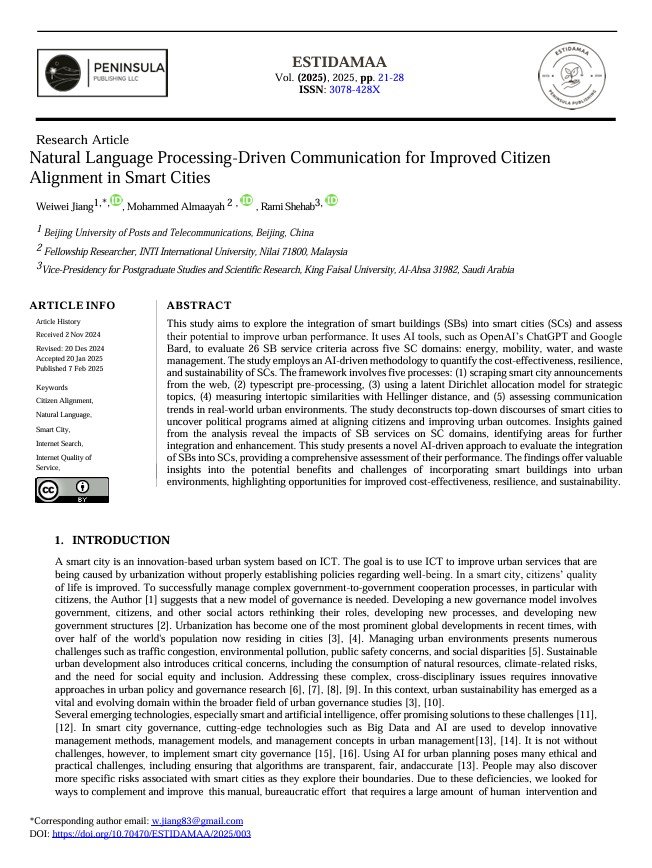Natural Language Processing-Driven Communication for Improved Citizen Alignment in Smart Cities
Main Article Content
Abstract
This study aims to explore the integration of smart buildings (SBs) into smart cities (SCs) and assess their potential to improve urban performance. It uses AI tools, such as OpenAI’s ChatGPT and Google Bard, to evaluate 26 SB service criteria across five SC domains: energy, mobility, water, and waste management. The study employs an AI-driven methodology to quantify the cost-effectiveness, resilience, and sustainability of SCs. The framework involves five processes: (1) scraping smart city announcements from the web, (2) typescript pre-processing, (3) using a latent Dirichlet allocation model for strategic topics, (4) measuring intertopic similarities with Hellinger distance, and (5) assessing communication trends in real-world urban environments. The study deconstructs top-down discourses of smart cities to uncover political programs aimed at aligning citizens and improving urban outcomes. Insights gained from the analysis reveal the impacts of SB services on SC domains, identifying areas for further integration and enhancement. This study presents a novel AI-driven approach to evaluate the integration of SBs into SCs, providing a comprehensive assessment of their performance. The findings offer valuable insights into the potential benefits and challenges of incorporating smart buildings into urban environments, highlighting opportunities for improved cost-effectiveness, resilience, and sustainability.
Article Details

This work is licensed under a Creative Commons Attribution 4.0 International License.
